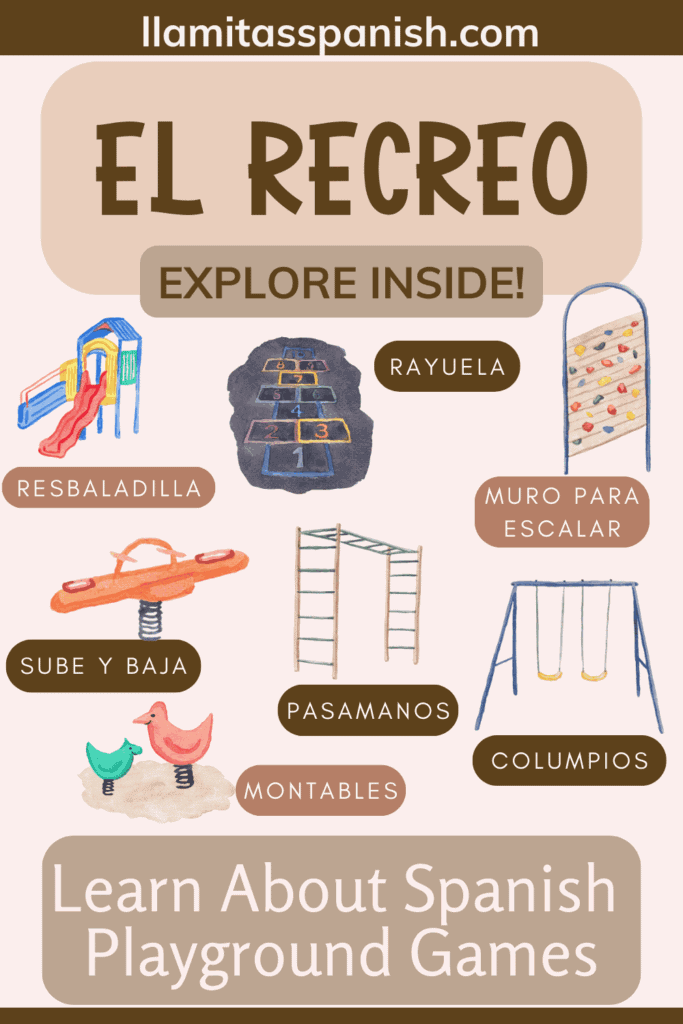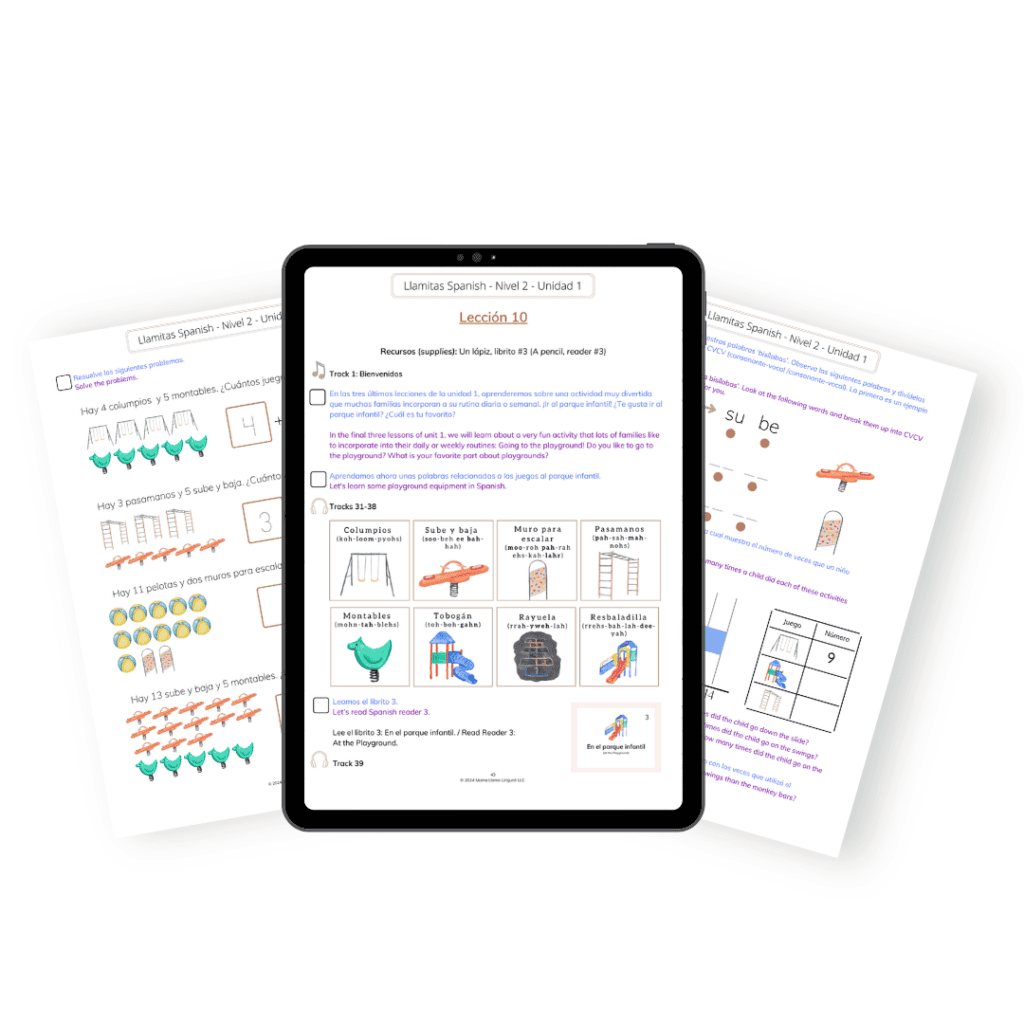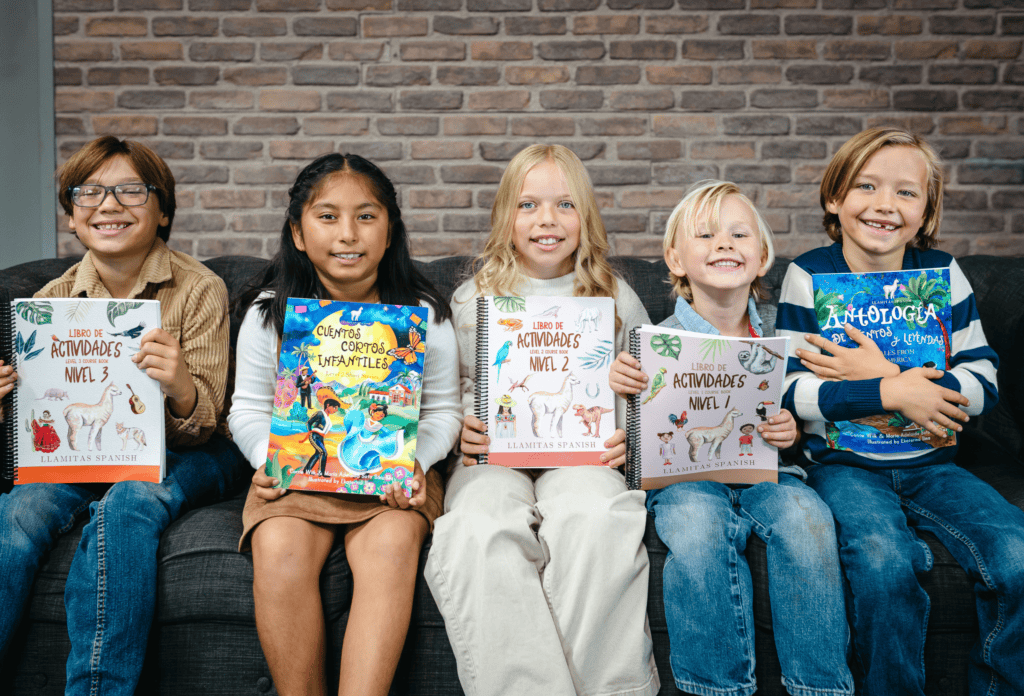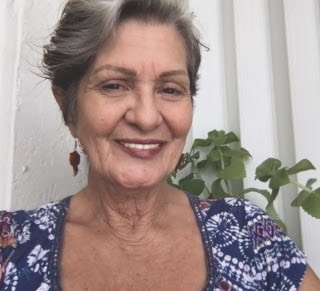In this post: Discover popular Spanish language games children play during recess and on the playground!
Playground games are played by children all over the world and are widely popular in Spain and Latin America.
They also provide excellent opportunities to strengthen language skills thanks to the rhyming patterns and clever lyrics that they employ.
For parents raising bilingual families, enjoying playground games in Spanish can be an excellent way to enhance your child’s enjoyment of the Spanish language, as well as their fluency and confidence.

Our Llamitas Spanish Curriculum provides the essentials you’ll need to help your kids master Spanish at home, and comes in sequential levels, allowing each child to learn at their own pace and skill level.
Our Level 2 Curriculum includes a unit on Playground Lessons and how to make the playground a place where fun and education go hand in hand.
Traditional playground games can include Spanish Circle Games (Ruedas) and/or Clapping games (Juegos de manos).
Playing outdoor games has many benefits for children, helping them develop physically and mentally by reinforcing physical coordination and mental agility.
These games also help kids develop social skills, cultural values, and creativity, reinforcing an optimistic outlook and positive self-esteem.
While many of these games are universal, playing them in Spanish can make them more fun and educational!
Spanish Playground Vocabulary
There are almost as many ways to say the word playground as there are activities to do there. Here are some of the well-known words and phrases you can use when referring to a playground:
- El parque
- El parque infantil
- Los juegos
- El área de juegos
- La zona de juegos
- El campo de juegos
- El patio de recreo (in a school)
As for the main activities, you can see the English and Spanish translation below. Read them aloud to help improve pronunciation and remind your kids to roll their r’s when necessary.
| English | Spanish |
| slide | resbaladilla |
| monkey bars | pasamanos |
| seesaw | sube y baja |
| slide | tobogán |
| hopscotch | avión / rayuela |
| swing | columpios |
Playground Worksheets in Spanish
Our Level 2 curriculum includes 6 thematic units for students who have completed Level 1, or have at least one year of formal Spanish education.
In Unit 1 students learn about their Daily routine, and the playground!

The worksheets and printables have lots of hands-on activities with vocabulary practice, phonics, math, and more!
Spanish Playground Games
Some of our favorite playground games include:
Las escondidas/Hide and Seek
One of the world’s most beloved playground games is Hide and Seek! The rules are universal. One child is blindfolded and counts to 100 while the remaining children hide.
The seeker then has to call out “¡Listo!” or “Ya voy” and proceed to find the hidden children. The last child to be found wins the game.
Bolas/cincos/canicas/curias (Marbles)
One of the most popular playground games in Spain and across Latin America, the game of marbles is a universal favorite.
The game is played on a flat dirt or sand surface. First, players trace a large circle in the dirt. Each player then places one of their marbles in the center of the circle, then the players take turns using their remaining marbles to knock their competitors’ marbles out of the circle.
When a player knocks another player’s canica out of the circle, they get to keep that marble. This is how great canica players build up their collections!
Las estatuas/Statues
This game requires a source of music and one child to be selected as the cuidador or cuidadora (caregiver), while the remaining children pretend to be statues.
The game is played by playing the music, during which time the statues are free to move about, dance, strike poses, and make all kinds of faces, while the cuidador/a faces the opposite direction. Once the caregiver stops the music and turns around, all the statues must freeze and remain perfectly still.
The caregiver then moves about among the frozen statues and any statue who makes any kind of physical reaction is Out. The last child to remain standing still as a statue wins the game.
Broken Phone (El teléfono descompuesto)
This game is played by children sitting in a row or circle. One child whispers a message to the child beside them, and each child then whispers it into the ear of the child sitting beside them.
This is repeated until the last child in the row or circle says the message aloud. In most cases, the message changes considerably as it makes its way from child to child.
Zapatito blanco, zapatito azul/ White shoe, blue shoe
This is a simple counting game made popular in Mexico and similar to Eeney Meeney Miney Moe. Children stand in a circle and repeat a simple rhyme while pointing at each child’s foot.
“Zapatito blanco, zapatito azul.
Dime, ¿cuántos años tienes tú?”
The child whose shoe is selected at by the end of the rhyme must reply. Once the child replies, the children count in unison to the number of that child’s age.
La víbora de la mar (The serpent of the sea)
This popular playground game is played in Mexican with several variations existing across Latin America. This game requires a minimum of four players but is best played with a larger group.
Two children are selected to hold hands and raise their arms in the form of an arch. One of these is designated as the watermelon or sandía, while the other is the cantaloupe or melón.
The remaining children form a line to imitate a snake, each holding onto the shoulders of the child in front of them. Together they sing:
A la víbora de la mar, (To the serpent of the sea,)
por aquí podrán pasar. (You can go through here.)
los de adelante corren mucho, (Those in the front run a lot,)
y los de atrás se quedarán (And those in the back will stay.)
Una mexicana que fruta vendía, (A Mexican lady sold fruit)
ciruela, chabacano, melón o sandía. (Plum, apricot, melon or watermelon)
Verbena, verbena, jardín de matatena (Verbena, verbena, matatena garden)
verbena, verbena, jardín de matatena (Verbena, verbena, matatena garden)
Campanita de oro déjame pasar (Little golden bell, let me through,)
con todos mis hijos menos el de atrás (With all mi kids except the last one,)
tras, tras, tras, tras (Last, last, last, last)
Será melón, será sandia (Will it be melon, will it be watermelon)
será melón será sandia (Will it be melon, will it be watermelon)
será la vieja del otro día (Will it be the old lady of the other day,)
Día, día, día (Day, day, day)
At this point the children forming the arch bring their arms down to enclose the child who is between them when the song ends. The child must choose to become team melon or team watermelon and stand behind the team leader for their chosen fruit.
After all the kids have chosen a team, the two teams engage in a tug of war to see which team wins.
For younger children or smaller groups, you may play a simpler and shorter variation of this game, where the child who gets trapped in the arch is simply out, or where the winning team is simply the team with the most members.
El juego del avión (Hopscotch)
This game is very popular across all of Spain and Latin America, and we’ll bet some version of it is played around the world!
First, draw the “plane” on the ground using chalk, as demonstrated in the video.
To play, each child must hop with one foot onto each single square, and land on two feet on the double squares. The child who finishes fastest wins!
El Rey Pide (The King Requests)
This is a game that is enjoyed across all of Latin America, and is similar to Simon Says. One child is selected to be the King.
The King makes requests for things that the other players have to do or find. Each kid has to do or find what the King requests, but only when the King actually says the phrase
“El rey pide” before making the request. If the King doesn’t say “el rey pide” any child who follows the order is eliminated from the game.
To further enhance your family’s fun with learning and practicing Spanish, check out our free educational resources, which include additional games, music, books, poems, and other great Spanish-language activities for children and families.


